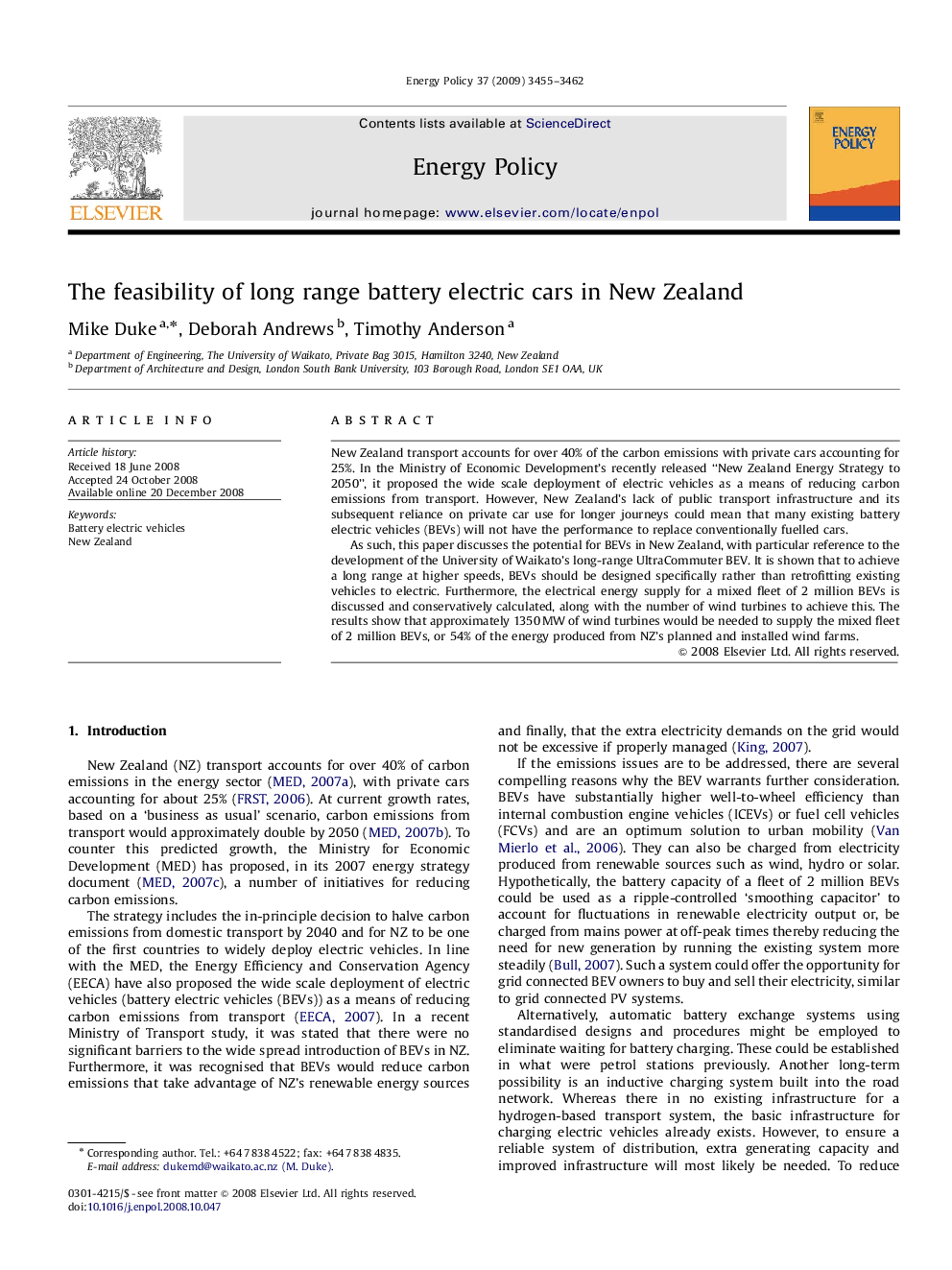| Article ID | Journal | Published Year | Pages | File Type |
|---|---|---|---|---|
| 996730 | Energy Policy | 2009 | 8 Pages |
New Zealand transport accounts for over 40% of the carbon emissions with private cars accounting for 25%. In the Ministry of Economic Development's recently released “New Zealand Energy Strategy to 2050”, it proposed the wide scale deployment of electric vehicles as a means of reducing carbon emissions from transport. However, New Zealand's lack of public transport infrastructure and its subsequent reliance on private car use for longer journeys could mean that many existing battery electric vehicles (BEVs) will not have the performance to replace conventionally fuelled cars.As such, this paper discusses the potential for BEVs in New Zealand, with particular reference to the development of the University of Waikato's long-range UltraCommuter BEV. It is shown that to achieve a long range at higher speeds, BEVs should be designed specifically rather than retrofitting existing vehicles to electric. Furthermore, the electrical energy supply for a mixed fleet of 2 million BEVs is discussed and conservatively calculated, along with the number of wind turbines to achieve this. The results show that approximately 1350 MW of wind turbines would be needed to supply the mixed fleet of 2 million BEVs, or 54% of the energy produced from NZ's planned and installed wind farms.
